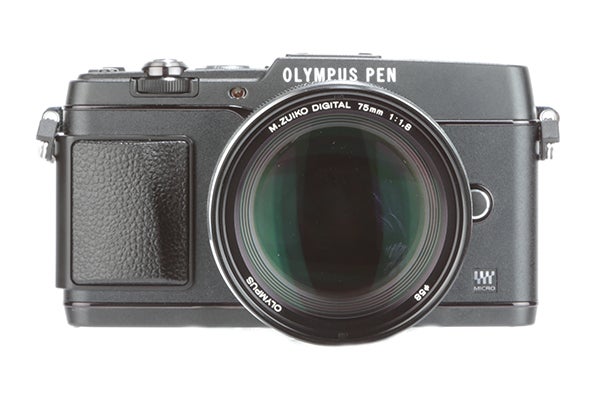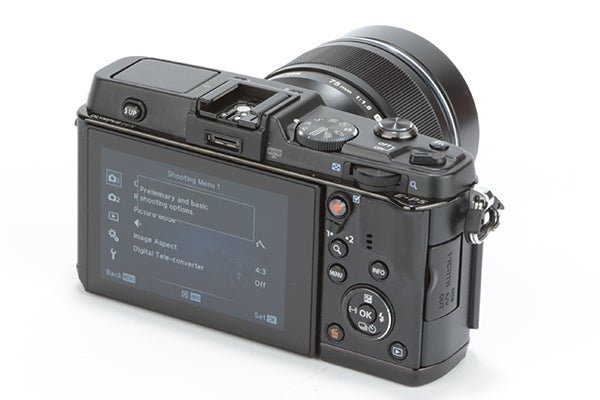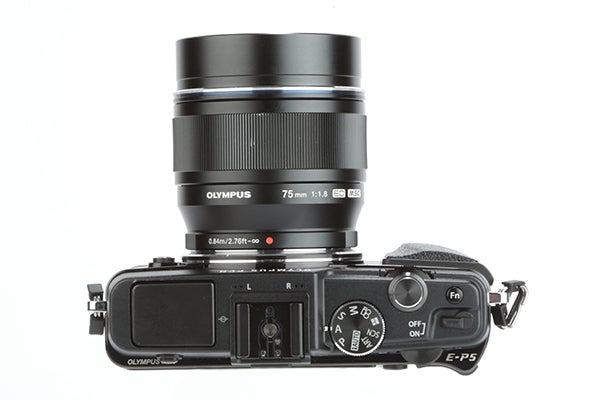Olympus Pen E-P5 Review - Design and Performance Review
Design and Performance
A stylish compact system camera with peformance to match.

Sections
- Page 1 Olympus Pen E-P5 Review
- Page 2 Design and Performance Review
- Page 3 Image Quality and Verdict Review
Olympus PEN E-P5 – Design
While previous models in the Olympus PEN series have made a nod towards Olympus’s old style of film cameras, the E-P5 goes a lot further towards cementing a retro feel.
One of the most noticeable indications of this is the omission of the modern-day Olympus logo on the camera’s front, which is replaced with an ‘Olympus PEN’ inscription almost identical to the PEN F of yore. The E-P5 is available in trio of finishes – all black, all white or a two-tone silver and black combo, with the latter being our preferred option.

Talking of the finish, the E-P5 feels like a quality bit of kit in the hand. It’s crafted from aluminium, while the shutter button and control dials are hewn from metal, completing the feel of quality around the body.
The E-P5’s controls have seen a serious overhaul on its E-P3 predecessor. Rather than a control dial on the rear of the camera and a scroll around the camera’s four-way control, the E-P5 now features a control dial on the front of the camera below the shutter button and one on the rear.

Completing this set of controls is a two-way lever around the movie record button. It allows you to switch around the two control dials the change their functionality, while also allowing you to assign them to two other settings, say between shutter and aperture control and white balance and ISO.
The dimensions are almost identical to the E-P3. If you’re really being attentive, you might say that the E-P5 is slightly larger due to the vari-angle LCD screen, but it’s a subtle difference. The rubberised thumb rest on its rear and a grip on the front, meanwhile, make the E-P5 easy to hold to handle.
Olympus PEN E-P5 – Performance

Olympus PEN E-P5 – Performance
The new dual-dial control configuration described in the E-P5’s design section offers a much better level of performance and a far more polished user experience in comparison to models in the E-P range.
The pair of dials and two-way lever offers instant access to any of the camera’s main shooting settings with very little needed by way of rooting around in the menu. The controls themselves are also pleasingly designed, offering a reassuring click when turned.
Although it’s disappointing that the Olympus E-P5 doesn’t feature a built-in viewfinder, the performance of the older VF-2 external viewfinder, and the new VF-4, is certainly impressive. The VF-4 in particular, which was the viewfinder that we used on this test, offers a large and bright display along with an excellent response time.
The unit’s eye sensor is also incredibly responsive, switching the unit on as soon as it’s near the eye. The performance is such that you would really have to consider either the VF-2 or VF-4 as an essential purchase to accompany the E-P5 – neither comes as standard.

That’s not to say that the 3-inch display on the E-P5 is disappointing. In fact, it has a pleasingly wide viewing angle, as well as good level of clarity and contrast. Throw in the screen’s articulated nature and it’s an excellent addition to the camera, particularly as the touchscreen is so responsive that it only really needs the lightest of touches to operate it. It lacks some of advanced features, but the physical controls are good enough you won’t miss them.
Olympus claims some pretty impressive AF figures thanks to the aptly named FAST system. The good news for potential purchasers is that the E-P5 generally delivers in this department. In Single AF mode the model is both prompt and accurate, while the same is true in Continuous AF.
The only area where it’s a bit slower is in AF Tracking mode, struggling slightly with faster moving subjects, although on the whole the AF performance is definitely up with the better CSC performers in its class.
The E-P5’s burst mode is also impressive, delivering a rate of 9fps for some 18 Raw files. If you’re happy shooting just JPEG files then the buffer’s capacity increases to some 28 frames.

